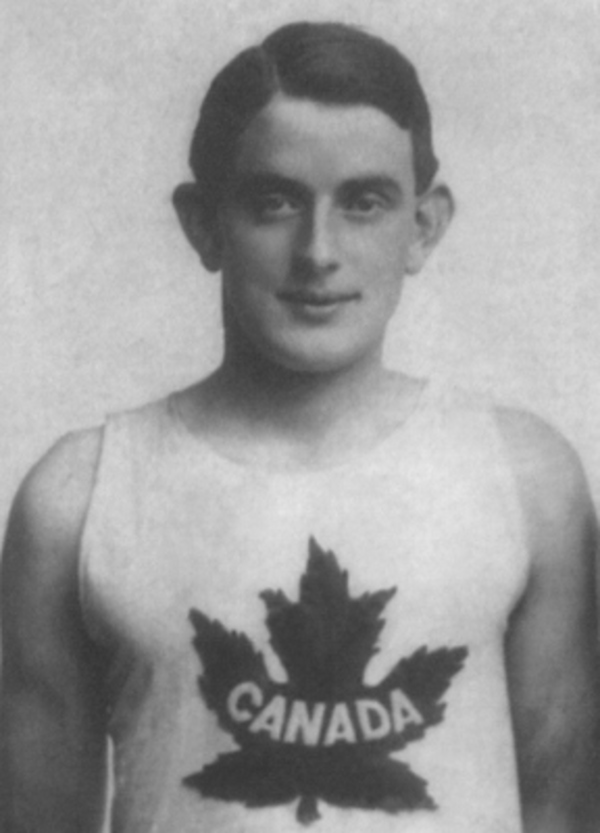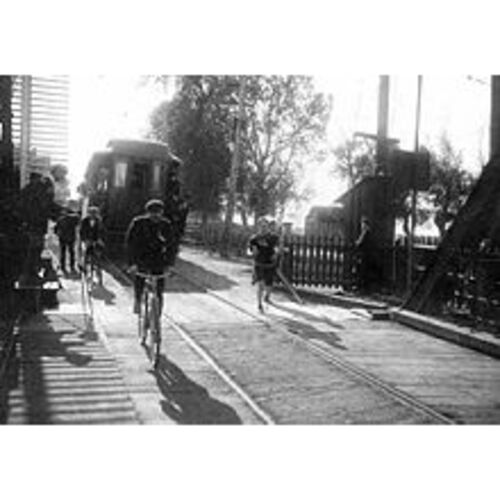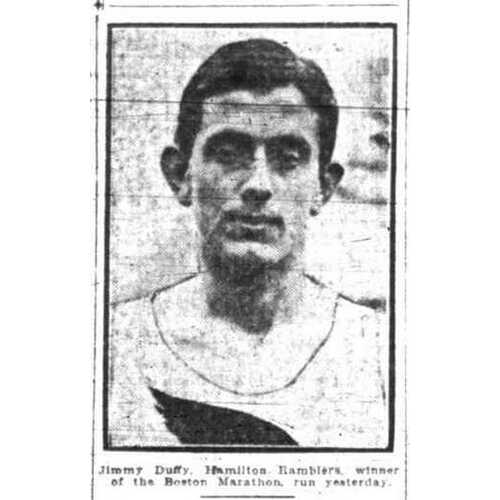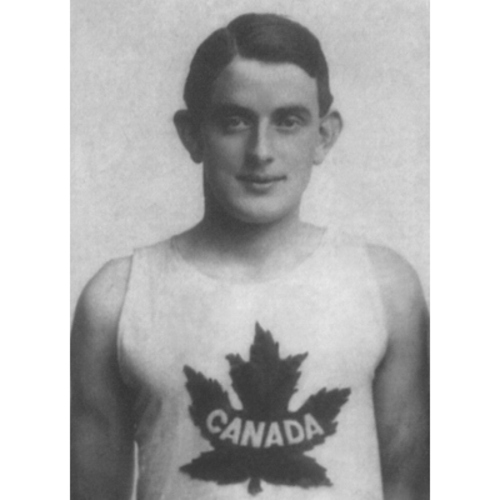
Source: Link
DUFFY, JAMES, porter and runner; b. 1 May 1890 in Sligo (Republic of Ireland), son of James Duffy and Mary —; d. unmarried 23 April 1915 near Ypres (Ieper), Belgium.
As a child, Jimmy Duffy immigrated with his parents to Edinburgh, where he learned the trade of stonecutting and became a successful distance runner with the Edinburgh Harriers. He won the Scottish junior cross-country title in 1909, gained the Scottish national record for five miles (25 minutes 52 seconds) in 1910, and represented Scotland three times in the international cross-country championship. In 1911 he joined the migration of young, single Scots and Irish-Scots to Canada. He may well have been lured by the revival of professional distance running in North America that followed the dramatic 1908 Olympic marathon in London, England. In this race front-running Dorando Pietri of Italy collapsed just yards from the finish. One of the stars of the circuit was Onondaga runner Tom Longboat* of Toronto. Duffy settled there, taking a job as a porter with T. Eaton Company and joining the Central Young Men’s Christian Association.
Duffy quickly made a name for himself among the sporting fraternity by placing second in the 1911 running of the Ward Marathon. The course measured roughly 20 miles out and back along Lake Shore Road from the exhibition grounds. (Marathon races had yet to be standardized.) The following spring, in the colours of the Eaton’s Athletic Association, he placed second to Harry Jenson of New York in the Hamilton Spectator Marathon. Run over the famous 19-mile 186-yard “Around-the-Bay” course, it served as the Canadian trial for the upcoming Olympic games. Despite his accent and brief residence, he was readily accepted as the top Canadian and was named to the Stockholm-bound team.
In the Ward and Spectator marathons Duffy had taken an early lead, only to tire and be overtaken in the later stages. He was much more cautious in 1912 in Stockholm, where the distance of 24 miles 1,725 yards was run in stifling heat. Starting slowly – at the halfway point he was so far back that his position was not recorded – he gradually moved up in the last ten miles. Although he never came close to the eventual winner, South African Kenneth McArthur, he finished fifth, some 5 1/2 minutes behind, in 2 hours 42 minutes 18 seconds. It is still the best placing by a Canadian in the Olympic marathon.
This experience seemed to complete Duffy’s education in judging his pace. Upon his return to Toronto, he won a string of major races. In the fall of 1912 he took the Ward Marathon and set a record (1 hour 46 minutes 15 seconds) in the Hamilton Herald Marathon over the “Around-the-Bay” course that would stand for 46 years. He stayed on in Hamilton to train under Tommy Thompson of the Ramblers Bicycle Club and to enjoy the more relaxed training atmosphere of clubs in that city. (A Toronto obituary would judge Duffy “a most erratic trainer.”) In 1913 he won the Yonkers Marathon in New York and the Herald marathon again. The following year he triumphed in the prestigious Boston marathon after a tense tactical duel with Montrealer Édouard Fabre*. The two traded accelerations throughout the 25-mile race before Duffy pulled away in the last mile for a 15-second victory in 2 hours 25 minutes 1 second. The Boston Post described the event as “the most sensational race ever held” and proclaimed Duffy “the king of marathoners.”
After Boston, Duffy turned professional, but the pickings were slim. Audiences, which had flocked to Longboat’s dramatic duels with Pietri, Alfred Shrubb, and others just a few years earlier, had lost interest in distance running. Duffy could manage only a few exhibitions at country fairs. With the outbreak of World War I, he enlisted, like many other old-country sportsmen; at the time he was five feet eight and a half inches and 160 pounds. He was one of the 278 members (out of 305) of the 16th Infantry Battalion (the Canadian Scottish) who were killed in the midnight assault on German positions at Kitchener’s Wood, northeast of Ypres. Duffy was buried in the military cemetery at Vlamertinge.
NA, RG 150, Acc. 1992–93/166, file 29437, esp. attestation paper. Boston Post, 21 April 1914. Evening Telegram (Toronto), 30 April 1915: 18. DHB, vol.2. Directory, Toronto, 1913. The fifth Olympiad; the official report of the Olympic games of Stockholm. 1912, ed. Erik Bergvall, trans. Edward Adams-Roy (Stockholm, [1913]). H. M[acI]. Urquhart, The history of the 16th Battalion (the Canadian Scottish), Canadian Expeditionary Force, in the Great War, 1914–1919 (Toronto, 1932).
Cite This Article
Bruce Kidd, “DUFFY, JAMES,” in Dictionary of Canadian Biography, vol. 14, University of Toronto/Université Laval, 2003–, accessed December 31, 2025, https://www.biographi.ca/en/bio/duffy_james_14E.html.
The citation above shows the format for footnotes and endnotes according to the Chicago manual of style (16th edition). Information to be used in other citation formats:
| Permalink: | https://www.biographi.ca/en/bio/duffy_james_14E.html |
| Author of Article: | Bruce Kidd |
| Title of Article: | DUFFY, JAMES |
| Publication Name: | Dictionary of Canadian Biography, vol. 14 |
| Publisher: | University of Toronto/Université Laval |
| Year of publication: | 1998 |
| Year of revision: | 1998 |
| Access Date: | December 31, 2025 |





